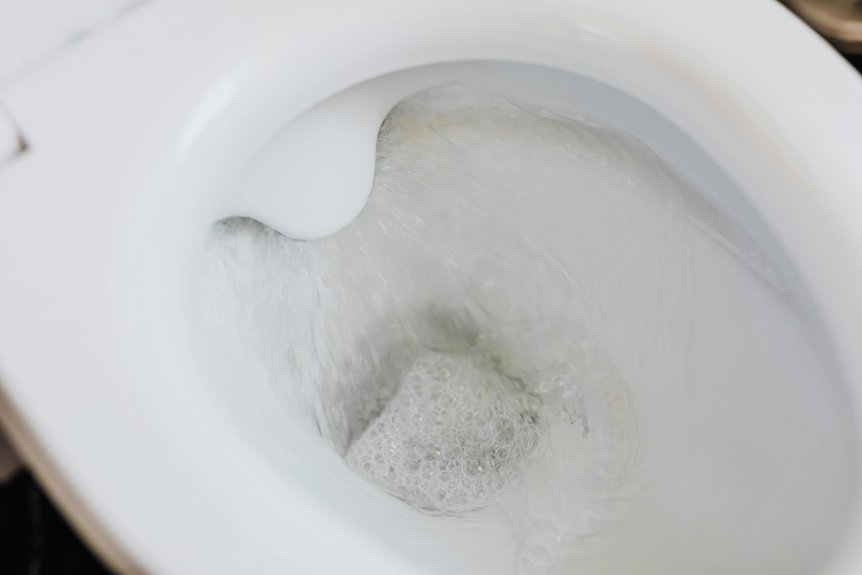If your toilet won’t fill after a flush, you’re not alone. This common issue can stem from several causes, and identifying the problem is key to a quick fix. Whether it’s a clogged fill valve or a faulty float assembly, troubleshooting can save you a call to the plumber. Let’s explore the main culprits behind this frustrating situation and how you can get your toilet back in working order.
Understanding the Toilet Fill Mechanism
When you flush your toilet, the fill mechanism kicks into action to refill the tank, ensuring it’s ready for the next use. This system typically includes a float, a fill valve, and a supply line.
As the tank empties, the float drops, signaling the fill valve to open and allow water to flow in. Once the tank reaches the appropriate level, the float rises and shuts off the valve.
If your toilet won’t fill after a flush, check for common issues like a stuck float or a clogged fill valve. Adjusting the float height or cleaning the valve can often resolve these problems quickly, restoring your toilet’s functionality without needing a professional.
Low Water Pressure Issues
If your toilet’s fill mechanism is functioning but the tank still won’t fill after a flush, low water pressure might be the culprit.
Check the water supply valve, usually located near the floor behind the toilet. Ensure it’s fully open; a partially closed valve can drastically reduce water flow.
Next, inspect your home’s overall water pressure. You can use a pressure gauge attached to an outdoor faucet to measure it. If the readings are low, you may need to consult a plumber.
Additionally, consider whether other fixtures in your home are experiencing similar issues—this could indicate a broader plumbing problem.
Addressing low water pressure promptly can prevent further complications and ensure your toilet operates smoothly.
Clogged Fill Valve
A clogged fill valve can be a frustrating issue that prevents your toilet tank from filling properly. This valve controls the water flow into your tank, and if it’s blocked by sediment or debris, you won’t get the refill you need.
To tackle this, start by turning off the water supply to your toilet. Then, disconnect the fill valve from the water line and inspect it for any visible blockages. You can clean it out using a brush or a cloth.
If the clog persists, consider soaking the valve in vinegar to dissolve mineral buildup. Once you’ve cleared the obstruction, reassemble everything and turn the water supply back on. Your toilet should start filling normally again!
Faulty Float Assembly
After addressing a clogged fill valve, the next common issue you might encounter is a faulty float assembly.
The float assembly controls the water level in your toilet tank, so if it’s malfunctioning, your tank won’t fill properly. Start by checking if the float is stuck or obstructed. Gently lift it to see if the water starts flowing.
If the float is damaged or doesn’t move freely, you may need to replace it. Ensure that the height is correctly set according to your toilet model—too high or too low can cause filling issues.
Regularly inspect this component to maintain your toilet’s efficiency. Fixing a faulty float assembly can save water and improve your toilet’s performance.
Broken or Disconnected Chain
One common reason your toilet mightn’t fill after a flush is a broken or disconnected chain. This chain connects the flush handle to the flapper, which opens to let water flow into the bowl.
If the chain is too loose or broken, the flapper won’t lift properly, preventing water from entering the tank.
To check this, simply remove the tank lid and inspect the chain. If it’s tangled or snapped, you’ll need to either adjust the length or replace it.
Reconnect any dislodged parts, ensuring the chain has a little slack for smooth operation. A functioning chain is crucial for your toilet’s refilling process, so take a few minutes to fix it and restore your toilet’s efficiency.
Issues With the Supply Line
If your toilet isn’t filling after a flush, issues with the supply line might be the culprit.
Start by checking the supply valve, usually located near the wall. Ensure it’s fully open; sometimes, it can get accidentally turned off.
Next, inspect the supply line itself for any visible kinks or damage that could restrict water flow. If you notice any leaks or corrosion, it may be time to replace the line.
Additionally, sediment buildup can clog the line, so flushing it out might help restore proper flow.
Lastly, make sure the connection to the toilet tank is secure.
Addressing these supply line issues can often resolve your toilet’s filling problems quickly and easily.
Defective Fill Valve
Once you’ve ruled out supply line issues, a defective fill valve could be the reason your toilet isn’t filling after a flush.
The fill valve controls water flow into the tank, and if it’s malfunctioning, you won’t see any water entering.
First, check for visible damage or wear. If it’s stuck, try gently tapping it to see if that helps. You might also want to adjust the float arm, as it could be set too low.
If these simple fixes don’t work, you may need to replace the fill valve altogether. This isn’t a complicated task; just turn off the water supply, disconnect the old valve, and install a new one.
Soon, your toilet should be back in action!
Sediment Buildup in the Tank
Sediment buildup in the tank can be a sneaky culprit behind your toilet’s failure to fill after a flush.
Over time, minerals and debris can accumulate, clogging the fill valve and restricting water flow. You might notice a slow fill or no fill at all, making it crucial to address this issue.
Start by shutting off the water supply and draining the tank. Once empty, inspect the bottom for any visible sediment. You can use a sponge or cloth to clean it out.
If you find significant buildup, consider flushing the tank with a vinegar solution to dissolve mineral deposits.
Regular maintenance will help prevent future sediment issues, ensuring your toilet functions smoothly.
Improper Tank Settings
While it might seem like a minor detail, improper tank settings can significantly impact your toilet’s ability to fill after a flush.
If the float is set too low, it won’t allow enough water into the tank, causing slow or inadequate filling. Start by checking the float’s height. If it’s adjustable, raise it slightly to ensure the tank fills to the proper level.
Also, check the fill valve; it might need adjustment to provide a better flow rate. If you hear water running continuously, it might indicate that the flapper isn’t sealing properly, but that’s a separate issue.
When to Call a Professional
If you’ve tried troubleshooting your toilet and it still won’t fill after a flush, it might be time to call a professional plumber.
Persistent issues, such as a malfunctioning fill valve or a broken float arm, often require expert attention. If you notice leaks, strange noises, or an inability to resolve the problem despite your best efforts, don’t hesitate to reach out for help.
A plumber can quickly diagnose the issue, ensuring your toilet functions properly and efficiently. Additionally, if you lack the tools or experience to handle repairs, it’s wise to avoid DIY attempts that could worsen the situation.
Conclusion
In conclusion, if your toilet won’t fill after a flush, don’t panic! By checking simple things like the water supply valve, fill valve, and float assembly, you can often identify the issue quickly. Regular maintenance can save you time and hassle in the long run. If you’ve tried these fixes and still face problems, it might be time to call a professional. Remember, a well-functioning toilet is key to a comfortable home!


